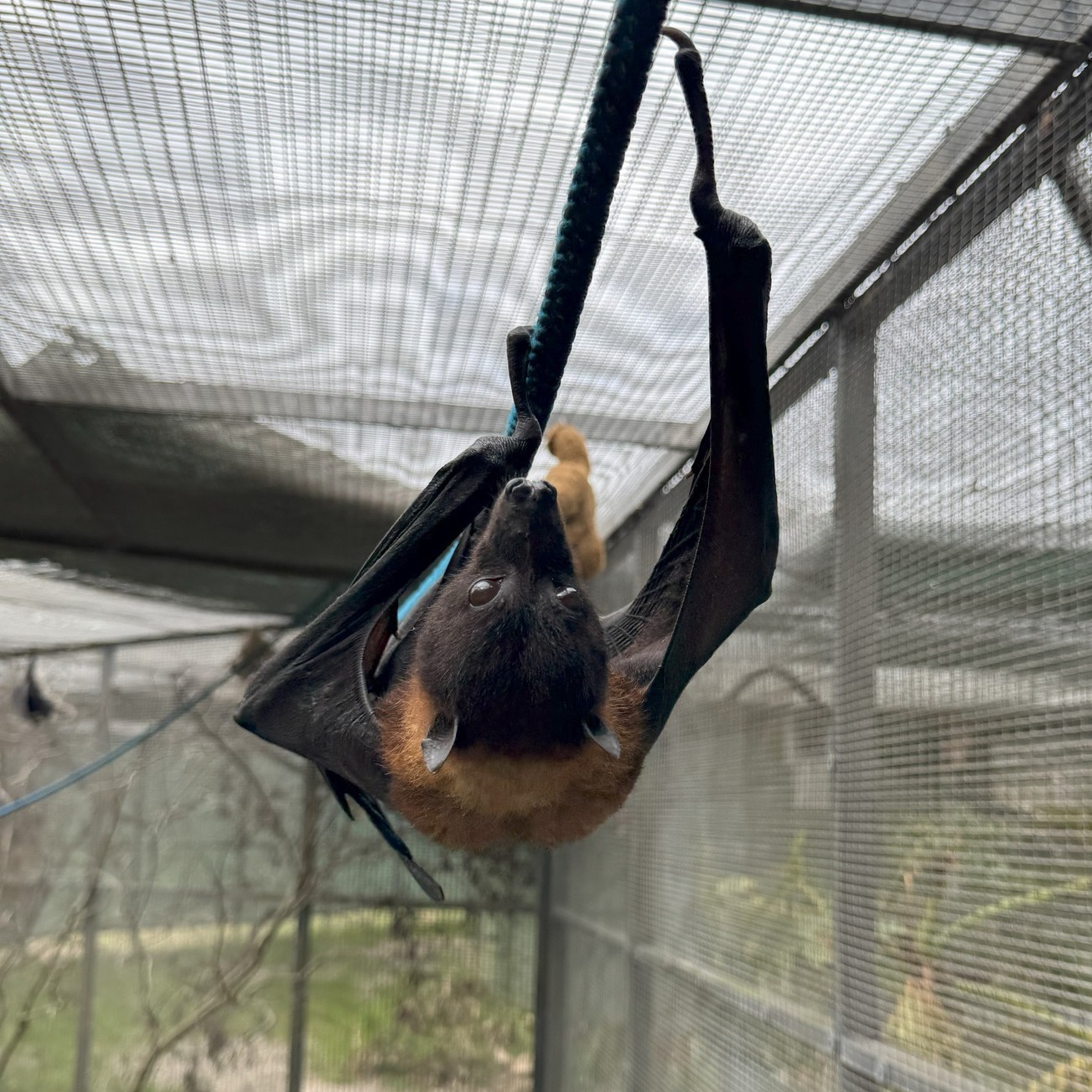- Introduction to the Variable Flying Fox and its habitat
- The social behavior and communication practices of Flying Foxes
- The role of ropes in bat habitats and their ecological significance
- Conservation efforts and threats facing Flying Fox populations
- The importance of zoos in education and wildlife preservation
The Variable Flying Fox, also known as Pteropus hypomelanus, is an intriguing creature found within the vast bat family. These bats, weighing between 500 to 1000 grams with a wingspan reaching almost 1.5 meters, are mainly frugivorous and have a range covering regions from the Nicobar Islands to the Malay Peninsula, demonstrating a notable adaptability to different environments.
In controlled environments like zoos, animals such as Frick the Variable Flying Fox can be observed engaging with their habitat actively. These enclosures are designed with ropes that serve both functional and recreational purposes for the bats. For Frick and his counterparts, these ropes mimic the lianas and branches of their natural settings, providing critical infrastructure for movement, rest, and nestling. They act as both transit routes within the habitat and social gathering spots, revealing much about bat behavior and communication dynamics.
Social interaction is a cornerstone of Flying Fox life. While primarily arboreal, Flying Foxes depend on these ropes not just for navigation but also for their social activities. Upon landing, bats exude pheromones and other scents, essential tools for communication among the species. This form of interaction aids bats in establishing hierarchies, identifying members of their colony, and even in spacing breeding colonies. Observing how Frick and his fellow Flying Foxes utilize these ropes provides valuable insights into their social structures and communal living.
The ropes also play a critical part in how Flying Foxes manage their complex social behaviors, especially within the confines of a zoo. They allow bats to initiate interactions without the need for direct contact, which can help reduce stress in these animals. The ropes become a canvas for scent marking, where each bat leaves a unique trace, much like how humans use language or digital media to communicate a message.
This interaction is crucial in understanding how conservationists can replicate natural behaviors in captivity, preserving not only the species but also their rich behavioral repertoires. Given the challenges currently facing these bats in the wild—including habitat destruction, hunting, and climate change—conservation efforts are crucial. The initiative to conserve Flying Foxes must be multi-faceted, targeting habitat preservation, legal protection against hunting, and fostering public awareness. Each aspect plays a pivotal role in safeguarding the existing populations.
In the wild, Variable Flying Foxes face significant challenges. Habitat loss due to deforestation and agricultural expansion directly impacts their feeding and roosting areas. Moreover, some cultures hunt these bats for food or perceive them as pests, aggravating their risk status. Conservation programs focus on creating sanctuaries, promoting regulations, and educating the public about the ecological importance of these remarkable creatures.
Zoos play an integral part in both conservation and education about these animals. They are more than places for public amusement; they function as living libraries of biodiversity, facilitating research and raising awareness about endangered species. Displaying animals such as the Variable Flying Fox helps highlight their ecological importance while inspiring actions toward conservation. Frick and his companions are ambassadors of their species, educating visitors about the need to preserve these and other animals for future generations.
These institutions often collaborate internationally to strengthen their conservation impact, developing breeding programs to sustain population numbers that may one day help replenish natural populations. The success of these programs depends on a deep understanding of each species’ biological and behavioral needs, making research and observation within zoos crucial.
Understanding the intricacies of a Flying Fox’s environment and social life underscores the importance of sustained conservation efforts. It requires a balance between habitat protection, legal measures against poaching, community engagement, and educational outreach. For Frick and the many Variable Flying Foxes inhabiting both zoos and the wild, their survival depends on these continued and expanded efforts. By educating the public and implementing strategies that protect their natural habitats, we can strive to mitigate the challenges that endanger these fascinating creatures, ensuring they continue to thrive for generations to come.
*****
Source Description
Variable Flying Fox, Frick, seems to be feeling a little sneaky this Sunday as he explores his habitat via the ropes! 🦇
Have you ever noticed the ropes in the background of our photos? The bats use them in lots of fun ways! While Frick here is using the ropes almost like bridges to navigate around his habitat, many bats will use the ropes as a landing pad when they are done flying. They can also be fun places for the bats to communicate via scent as well as extra places to “hang out.” 🦇🦇


